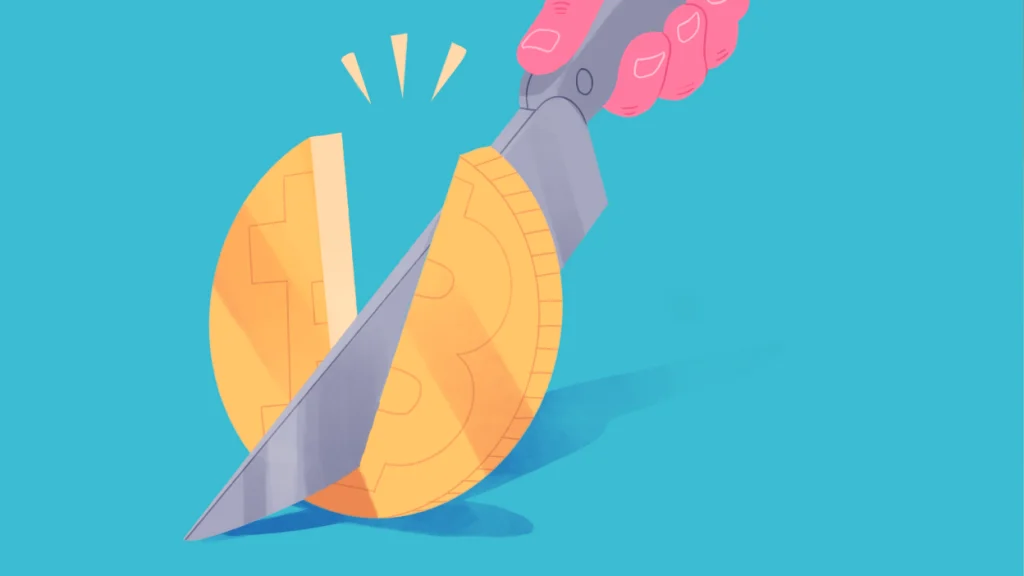The upcoming Bitcoin (BTC) halving, projected for April 2024, is poised to significantly impact the cryptocurrency’s price. Explore everything you should understand about the impending Bitcoin halving – its definition, reasons behind it, and how you can leverage it in trading.
You might like: Bitcoin Halving 2024: How It Works and Why It Matters
What is a Bitcoin Halving?
A Bitcoin halving, also known as ‘halvening’, is an event that occurs when the reward for mining new blocks on the Bitcoin network is cut in half. Miners, responsible for verifying transactions, receive 50% fewer bitcoins during halving events. Scheduled once every 210,000 blocks, which roughly equates to every four years, halving events reduce the number of new bitcoins generated until the maximum supply of 21 million bitcoins is reached.
Bitcoin halvings are pivotal for traders because they diminish the supply of new bitcoins, potentially causing prices to surge if demand remains robust.
When is the Next Bitcoin Halving?
The next Bitcoin halving is anticipated to happen in April 2024, triggered by the production of the 740,000th block. During this event, the block reward will decrease from 6.25 to 3.125 bitcoins. While the exact date remains uncertain due to variable block generation times, the network typically produces one block every ten minutes on average.
How to Trade the Bitcoin Halving
Trading the Bitcoin halving can be approached in two ways. Firstly, traders can speculate on the cryptocurrency’s price using derivatives like CFDs. Alternatively, traders can purchase bitcoins directly via an exchange.
Here’s how you can trade the Bitcoin halving effectively:
Educate yourself about CFD trading on cryptocurrencies.
Open an account or practice on a demo account.
Navigate to ‘Bitcoin’ on our trading platform.
Initiate your position.
One key advantage of trading cryptocurrencies with derivatives such as CFDs is that traders don’t need to possess the underlying coins. This allows traders to trade without needing an exchange account or wallet, go long or short on Bitcoin, and leverage their positions to amplify potential gains and losses.
What Happened During the Last BTC Halving?
The most recent Bitcoin halving occurred on 11 May 2020, where mining rewards were reduced by 50%, dropping from 12.5 to 6.25 new bitcoins per block. Following the event, the limited supply contributed to a bullish scenario, propelling Bitcoin’s price from $6877.62 a month before the halving to $8821 at the time of the event. Despite considerable volatility, prices continued to ascend, reaching $49504 on 11 May 2021.
Potential Impact of the Bitcoin Halving on BTC’s Price
The precise impact of the upcoming halving on Bitcoin’s price remains uncertain. Many analysts anticipate a pattern similar to past halvings, where prices surged post-event due to constrained coin supply. However, the trajectory of Bitcoin’s price will ultimately hinge on demand dynamics throughout the halving period. As the cryptocurrency market matures and competition from other digital assets intensifies, predicting demand becomes increasingly complex.
How Does a Halving Work?
A Bitcoin halving is an intrinsic feature of the network’s underlying blockchain software, which regulates the rate of new bitcoin creation. Miners compete to validate transactions through ‘mining’, receiving new bitcoins as rewards for their efforts. The network is programmed to halve these rewards every 210,000 blocks.
Why Does Bitcoin Halve?
Bitcoin halvings are encoded in the network’s software, designed by the anonymous figure or group known as ‘Satoshi Nakamoto’. While the exact rationale behind halvings remains speculative, theories suggest they were implemented to stimulate early adoption by distributing coins rapidly. Additionally, halvings introduce deflationary measures, ensuring a predetermined rate of new coin issuance.
Despite criticisms regarding Bitcoin’s design and halving mechanics, including accusations of fostering saving over spending and comparisons to pyramid schemes, halvings remain integral to Bitcoin’s monetary policy.
In conclusion, the Bitcoin halving represents a significant event in the cryptocurrency market, offering both opportunities and risks for traders. Understanding its implications and leveraging appropriate trading strategies can empower traders to navigate this event effectively and potentially capitalize on market movements.
You can present your own thoughts as comments about the topic. Moreover, you can follow us on Telegram and YouTube channels for this kind of news.


